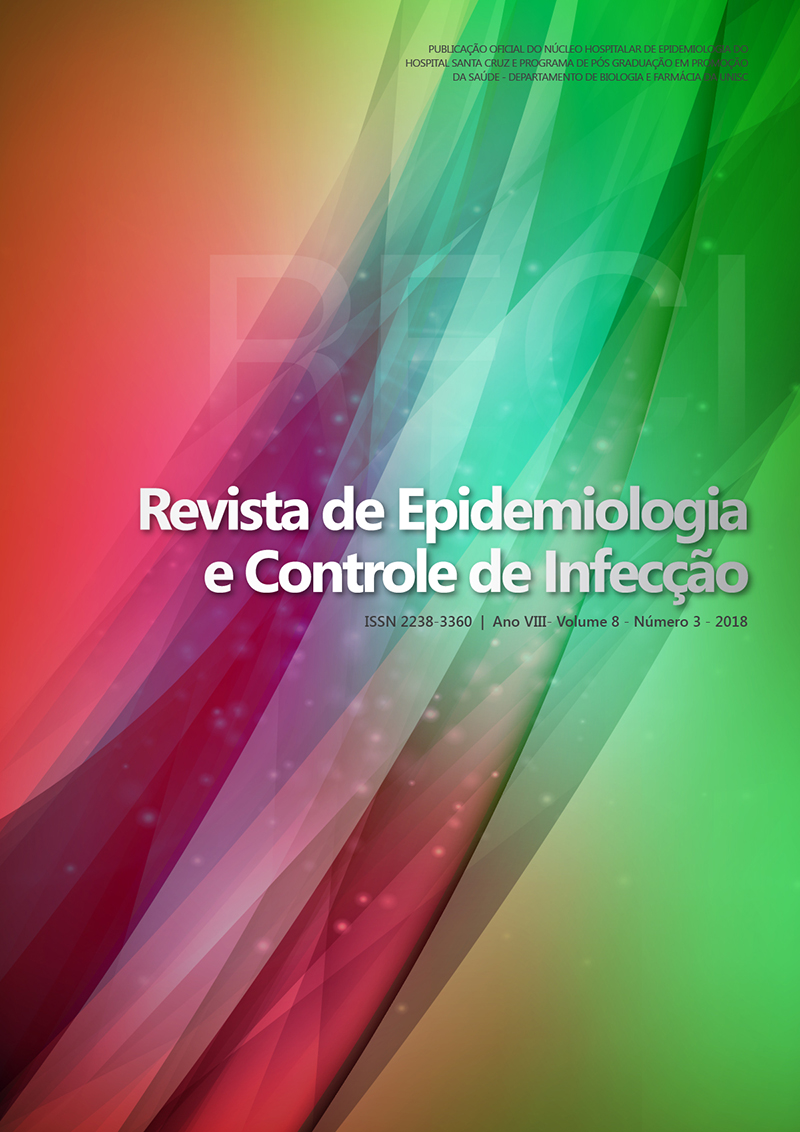Epidemiological and clinical characteristics of sepse in a public hospital of Paraná
DOI:
https://doi.org/10.17058/reci.v8i3.11438Abstract
Background and Objective: Sepsis is a public health problem that causes clinical and economic impact. The objective of this study was to identify the epidemiological and clinical characteristics of sepsis in a public hospital. Methods: This is an exploratory field research, documental, retrospective, with quantitative approach. Data were collected from patients admitted to the Intensive Care Unit from January 2012 to January 2017, for which a checklist with clinical and demographic variables was used. We included all patients from hospitalized patients who had sepsis at the time of admission or after admission. Descriptive frequency analysis, Distribution of previous variables and significance were obtained by the Chi-square test. Results: Of a total of 1,557 medical records, 1112 (71,4%) were included in the study, which were classified as Systemic inflammatory response syndrome (13,9%) sepsis (39,1%) or septic shock (47,0%). There was a predominance of male patients (55.8%), older than 70 years (36.3%) and white (92.6%). The prevalence of hospitalization was up to one week (50.4%). Prevalence of clinical patients (42.4%), with nosocomial infection found in 50.2% of the cases. The main sources of infection were lung (32.9%) and surgical wound (23.5%). Among the causes of admission, respiratory complications (19.5%) and polytrauma (9.3%) prevailed. Cultures were positive in 29.7% of the cases, mostly gram negative bacilli (12.1%). Mortality in SIRS, sepsis and septic shock was 0.3%, 30.1%, 33.0%, respectively. Conclusion: The study evidenced that sepsis affected mostly male elderly, and that the infectious focus was of pulmonary origin in the nosocomial scope. There were still high mortality rates, especially in cases of septic shock.Downloads
Downloads
Published
Issue
Section
License
The author must state that the paper is original (has not been published previously), not infringing any copyright or other ownership right involving third parties. Once the paper is submitted, the Journal reserves the right to make normative changes, such as spelling and grammar, in order to maintain the language standard, but respecting the author’s style. The published papers become ownership of RECI, considering that all the opinions expressed by the authors are their responsibility. Because we are an open access journal, we allow free use of articles in educational and scientific applications provided the source is cited under the Creative Commons CC-BY license.


